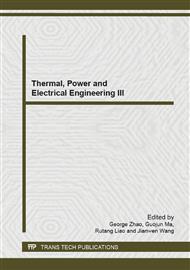p.528
p.534
p.539
p.543
p.547
p.551
p.555
p.559
p.568
Air Pressure Reducer Modeling by CFD Methodology
Abstract:
In this paper, the computational fluid dynamics (CFD) methodology as well as the shear-stress transport (SST) k-omega turbulence model was adopted to model the air pressure reducer (APR). Changing the gas needle’s displacement of APR continuously, the writer obtains the displacement-pressure characteristics of APR. In order to demonstrate the validity of these characteristics, a physical experiment was conducted, which generates another displacement-pressure characteristic. Comparing the two characteristics with a good agreement, it is indicated that the CFD methodology is suitable to study the displacement-pressure characteristics of APR.
Info:
Periodical:
Pages:
547-550
Citation:
Online since:
June 2014
Authors:
Price:
Сopyright:
© 2014 Trans Tech Publications Ltd. All Rights Reserved
Share:
Citation:


